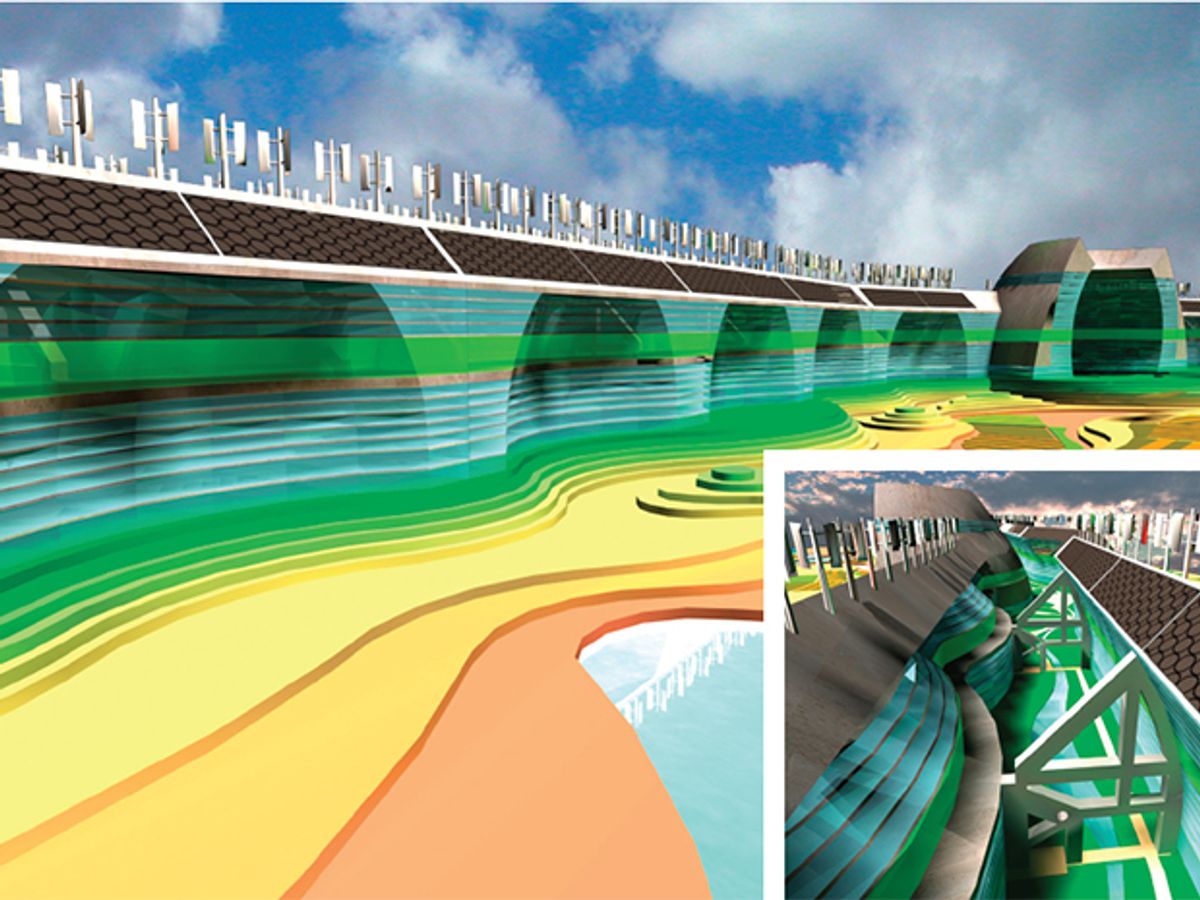How to Design a Perfect City
Paolo Soleri takes the city-as-system approach to its logical conclusion

This issue of IEEE Spectrum is not the first to be devoted to cities: 31 years ago, Spectrum tried to imagine what urban life would be like in the year 2000 and beyond. Some of those forecasts have proven remarkably accurate: ATMs, electronic supermarket checkouts, and cars with digital maps all arrived on schedule. Other predictions have not fared so well: New York City avoided collapse (albeit by a hair’s breadth), our cities do not get their energy from massive nuclear parks, and individualized mass-transit systems still remain little more than oxymora. But the jury is still out on one of our 1976 articles and its visionary subject: Paolo Soleri.
Soleri has been designing his so-called arcologies for decades. His drawings of the megastructures, which integrate all the functions of a city into one efficient supersystem, are as much art as engineering. They have inspired countless young architects and engineers to make a pilgrimage to Soleri’s home in the Arizona desert to study at the feet of the master.
Soleri, who turns 88 on 21 June, is still going strong; last year he was awarded the Cooper-Hewitt National Design Lifetime Achievement Award. He has created plans for floating cities, orbiting space colonies, and a building that would fit more than 100 000 people onto a single square kilometer.
Here we show one of his latest concepts, the Lean Linear City. Designed for the burgeoning urban populations of China, it stretches for hundreds of kilometers along the spine of a high-speed rail corridor to form a continuous structure in which people live, work, and play. Photovoltaic cells and windmills help power the city, which features a considerable amount of parkland.
Will one of Soleri’s arcologies ever be built? Who knows? But even if they never leave the drawing board, they surely will continue to inspire generations of engineers and architects.
To see all of Spectrum’s special report on The Megacity, including online extras and audio and video exclusives, go to /moremegacity.